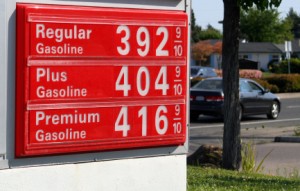WASHINGTON, DC – Things are on track for this to be the most expensive summer to drive ever. Motorists in the U.S. have already seen the national average for regular gasoline rise above $3.50 a gallon in just three different years, but never this early in the year.
 According to the U.S. Energy Department, the national average hit $3.523 a gallon, up 4.1 cents from a week earlier. Analysts predict the early price hikes are likely a sign that pain at the pump will rise to the highest peak levels ever this year.
According to the U.S. Energy Department, the national average hit $3.523 a gallon, up 4.1 cents from a week earlier. Analysts predict the early price hikes are likely a sign that pain at the pump will rise to the highest peak levels ever this year.
“This definitely sets the stage, potentially, for much higher prices later this year,” said Brian L. Milne, refined-fuels editor for Telvent DTN, a commodity information services firm. “There’s a chance that the U.S. average tops $4 a gallon by June, with some parts of the country approaching $5 a gallon.”
The last time gas prices were this high was in another election year, 2008. Average gasoline prices hit records above $4 nationally in that year but didn’t rise above $3.50 until April 21. That same level was breached last year on March 6. That means gas prices have risen more rapidly every year since Barak Obama became president.
Gas prices generally rise because refineries normally shut down for spring maintenance. It is during this time that states switch from less expensive winter blends of gasoline to more complicated and more expensive summer blends.
Tom Kloza, chief oil analyst for Oil Price Information Service says there are a number of reasons for the high prices and to expect a big price surge in the spring. “Early February crude oil prices are higher than they’ve ever been on similar calendar dates through the years,” Kloza said, “and the price of crude sets the standard for gasoline prices.”
Kloza sees some other factors involved in the escalating prices of note. Several refineries have been mothballed in recent months and some of those refineries “represented the key to a smooth spring transition from winter-to-spring gasoline.” The annual change in gasoline formulas is mandated by pollution-fighting regulations.
“Early February crude oil prices are higher than they’ve ever been on similar calendar dates through the years, and the price of crude sets the standard for gasoline prices,” Kloza said. “We’ve lost a number of refineries in the last six months to permanent closure. Some of those refineries represented the key to a smooth spring transition from winter-to-spring gasoline.”
The high cost has encouraged considerable disgust with drivers like Stanley Moore, who paid $3.85 a gallon at an Arco station in San Pedro. Moore, a child-welfare social worker, was on his mobile phone at the gas station Monday looking to write down a name when he realized he could just write the name in the grime on the hood of his gray 1999 Nissan Sentra.
“I used to wash it pretty often, take a little pride in how it looked,” said Moore, who thinks he last had it washed shortly after Labor Day. “All that money goes right into the gas tank now. Every year it gets worse.” Rising fuel prices affect not just the price at the pump, but the cost of goods and services as a whole.
“This definitely sets the stage, potentially, for much higher prices later this year,” said Brian L. Milne, refined fuels editor for Telvent DTN, a commodity information services firm. “There’s a chance that the U.S. average tops $4 a gallon by June, with some parts of the country approaching $5 a gallon.”
